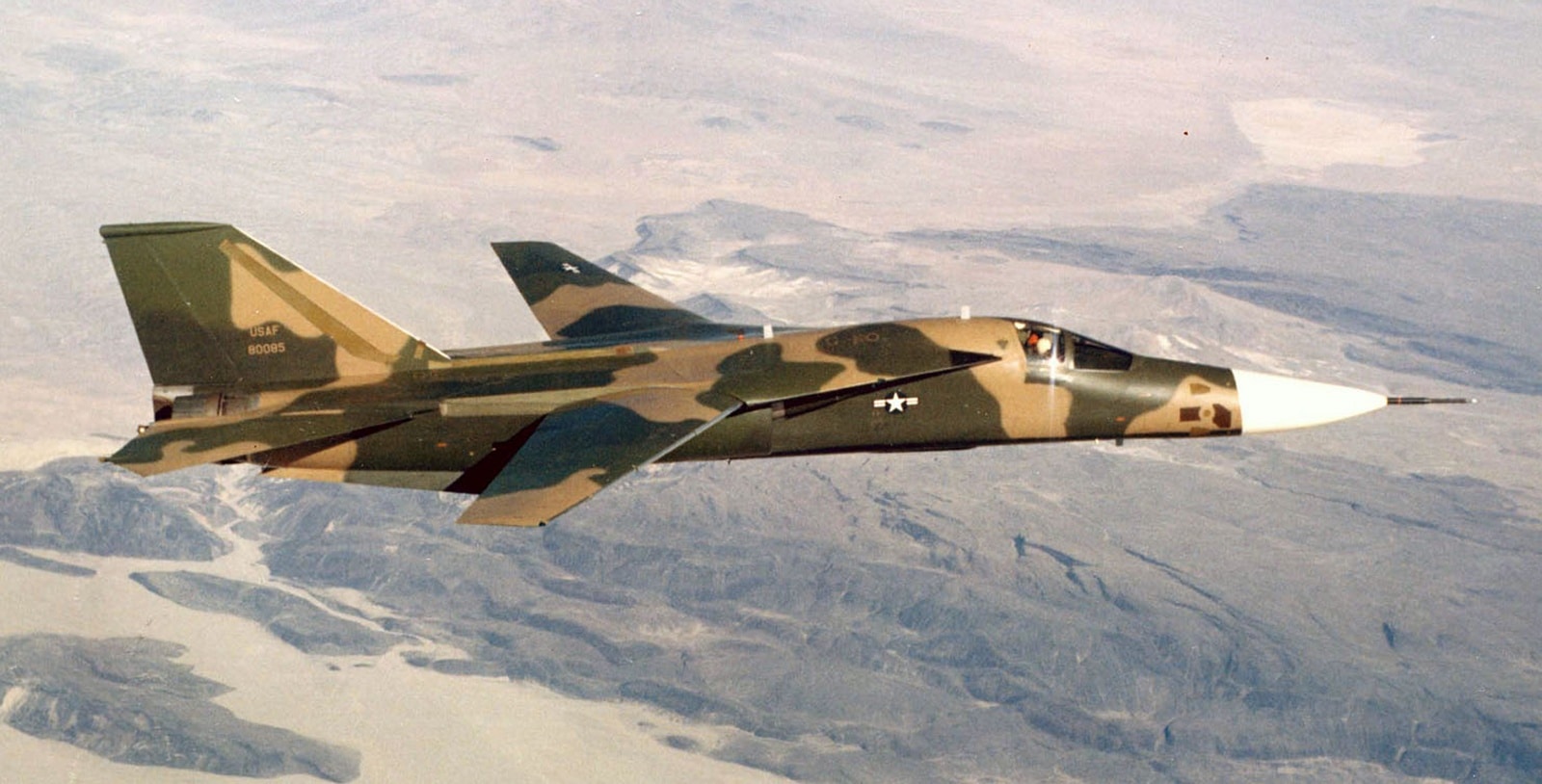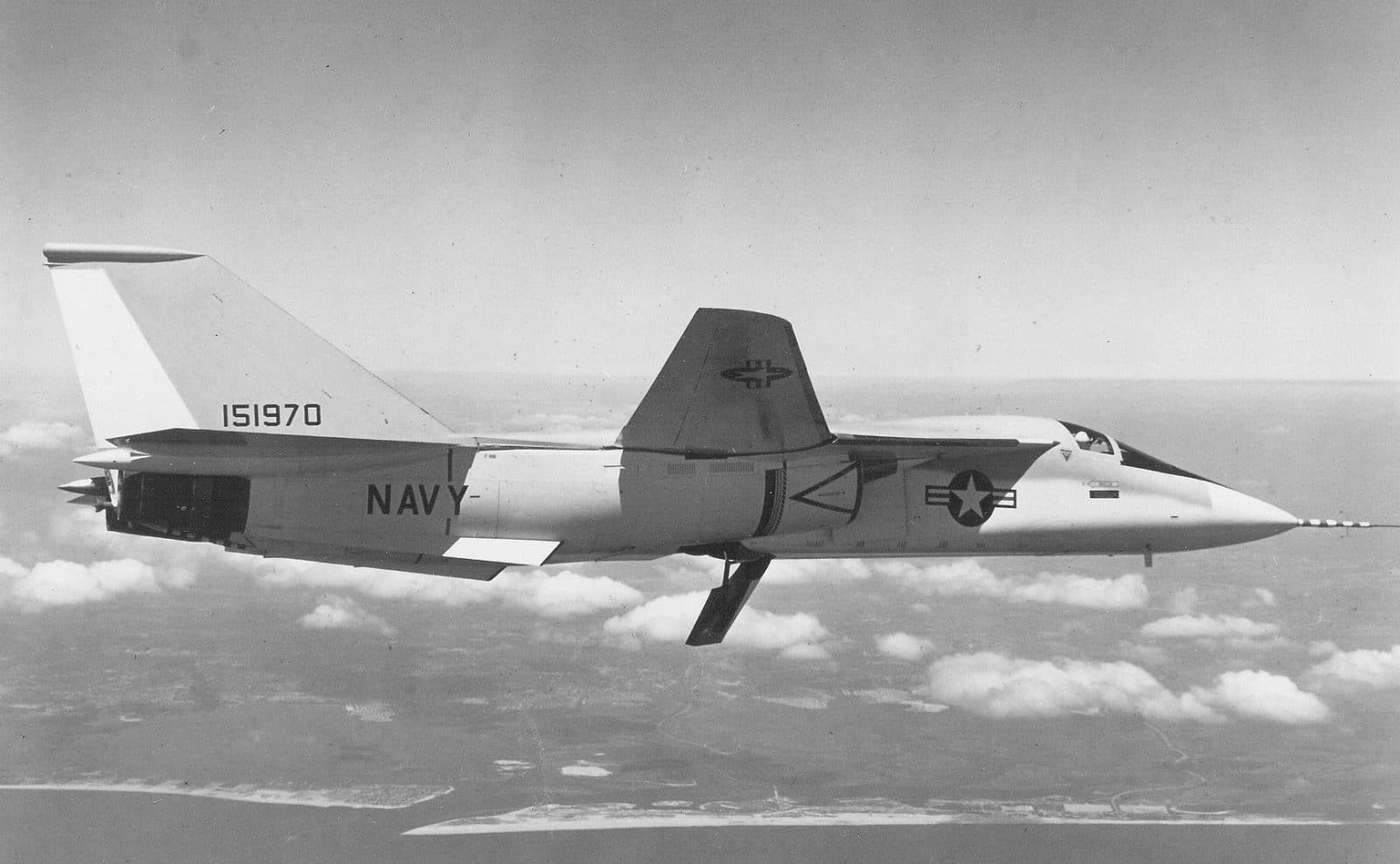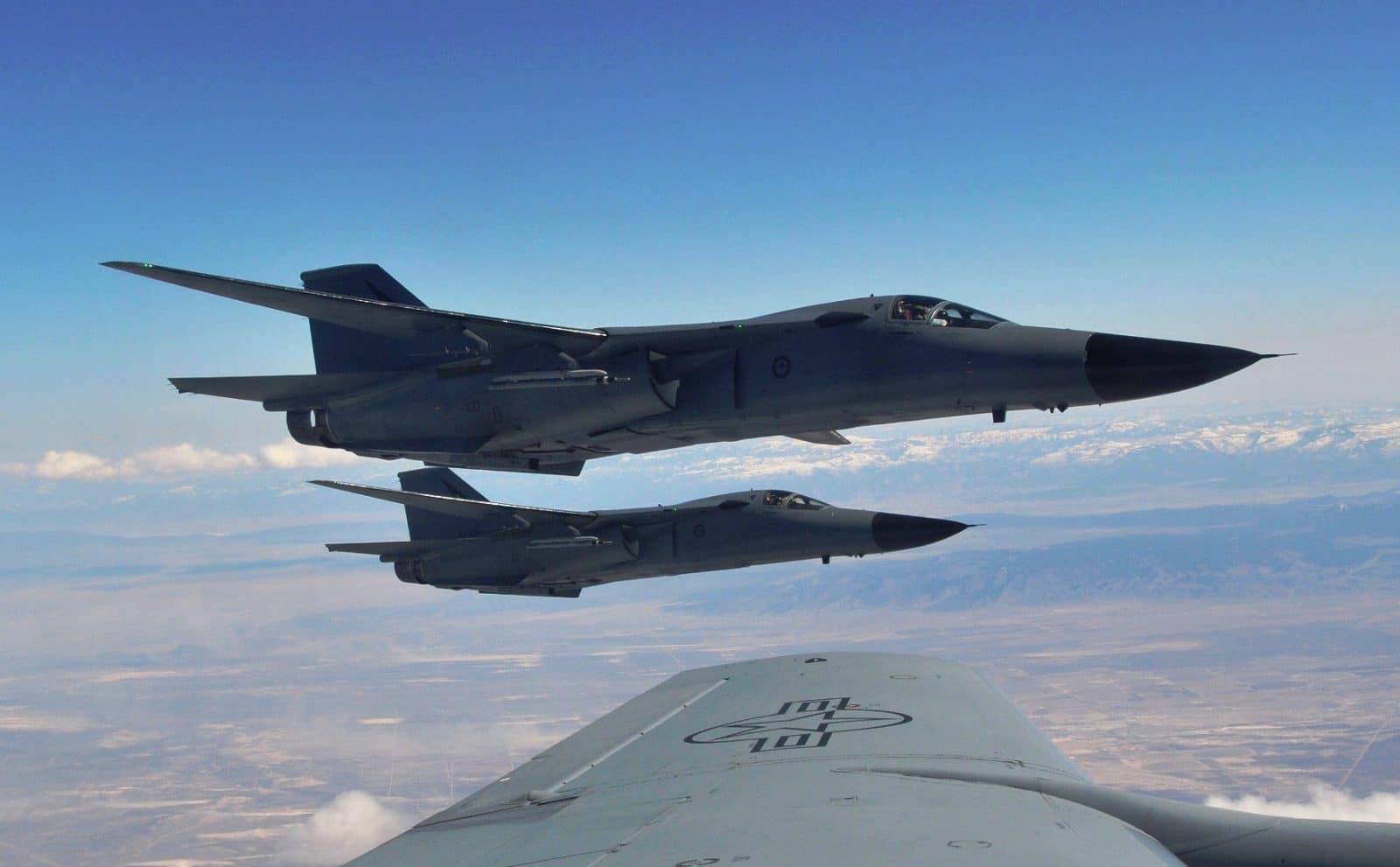An Impressive List of Firsts Along With Capabilities to Match-That Was the Vark
The General Dynamics F-111 Aardvark first entered service with the 428th Tactical Fighter Squadron (TFS) at Nellis Air Force Base (AFB) on 28 April 1968. When the 428th sent F-111As to Vietnam for the Combat Lancer program, the squadron was still in training at Nellis. Three of those initial six F-111As were lost in Vietnam- all due to horizontal stabilizer malfunctions and not due to enemy action.

Pioneering Spirit
The F-111A was the first production aircraft to incorporate variable-sweep wings into its design. Many more similar designs would follow. The F-111 was powered by the first afterburning turbofan engines. Those engines, the Pratt & Whitney TF30 turbofans, would power only two other American aircraft: The Grumman F-14A Tomcat (with afterburner) and the Vought A-7A/B/C Corsair II (without afterburner).

One Hell of a Ride
Another ground-breaking feature of the F-111A crew escape module. Rather than traditional ejection seats, the F-111A was designed with a jettisonable cabin. The cabin was designed to be separated from the jet by rocket thrust. The cabin would then descend under a large parachute. Airbags were used to cushion the landing and would float the module if it came down in water.

How to Haul an Impressive Payload
The F-111A was designed with an internal weapons bay that could carry bombs, auxiliary fuel tanks, or an M61 Vulcan 20 millimeter rotary cannon. Though the gun was seldom mounted, it gave the F-111A a fearsome ground attack weapon. Much more commonly carried were the auxiliary fuel tanks. External ordnance was carried on four underwing pylons. The inside pylons were capable of swiveling to remain lined up with the fuselage when the wings’ sweep was changed. The outer pylons were fixed.

Black Boxes and That Magic Nose
The F-111A’s ability to penetrate low and fast was provided by a new generation of avionics. The General Electric AN/APQ-113 attack radar was connected to a Texas Instruments AN/APQ-110 terrain following radar, both in that distinctive nose, and a Litton AJQ-20 inertial navigation and navigation attack system. These black boxes gave the F-111A its hands-free low-level flight capability.

The B
The F-111B was to be the Navy’s fleet air defense fighter aircraft. General Dynamics teamed with Grumman to adapt the F-111A for the Navy’s needs. Sporting a shorter nose and an arresting hook, the B was plagued by development problems and was never going to be able to operate in the harsh world of carrier aviation. Then the Navy changed its requirements for the new fighter, particularly those governing maneuverability. In the end, the Navy ended up with a TF30-powered, swing-wing fighter anyway…the F-14A Tomcat.

Those Pigs Down Under
F-111 development continued. The next major variant of the design was the F-111C for the Royal Australian Air Force (RAAF). The F-111C was basically an A with longer B wings and strengthened landing gear. The Aussies flew 24 F-111Cs, calling them Pigs, between 1973 and 2010. They also operated an additional 15 F-111G models between 1993 and 2007. The RAAF replaced their F-111s with Boeing F/A-18F Super Hornets. When the Pigs were retired at the end of 2010, the RAAF simply buried them in a landfill.




